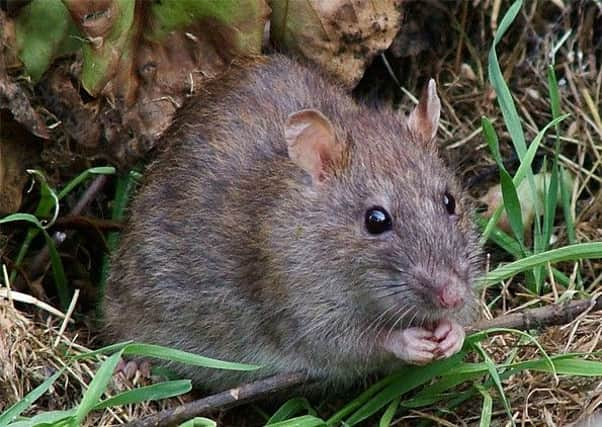Isle of Rum rat journey to be tracked on satellite


The rat on the Isle of Rum is being electronically tagged and its travels will be logged via satellite in one of the first projects of its kind anywhere in the world.
Researchers on Rum National Nature Reserve (NNR) are keen to move closer to understanding the impact of brown rat behaviour on nearby colonies of the Manx shearwater seabird.
Advertisement
Hide AdAdvertisement
Hide AdThe work will be carried out by Sean Carlisle, a PhD researcher from Anglia Ruskin University.
Rum is owned and managed by Scottish Natural Heritage (SNH). The island is home to around a quarter of the world’s breeding population of Manx shearwaters.
From April until September the Rum Cuillin comes alive after dark with the sound of the birds, which are no bigger than pigeons, as they retur to their breeding burrows after spending the winter off the east coast of South America.
They sometimes reaching the seas around the Falkland Islands before returning to Rum by way of the African coast – a round trip of more than 13,000 miles.
On Rum, they nest in burrows high in the mountains, fishing by day and returning to their nests at night.
Brown rats are recent colonists to the island and probably arrived on boats.
As on all offshore islands where rats have jumped ship, they have an adverse effect on native species.
This study is examining the significance of the Rum rats on the globally important Rum shearwater population.
Advertisement
Hide AdAdvertisement
Hide AdUnder the work one pioneering rodent has been fitted with a rat global positioning system (GPS) to track its movements over the coming weeks.
It is hoped results will be in by the end of February.
Lesley Watt, the SNH Rum reserve officer, said understanding rat behaviour was vital to assess their likely impacts on Manx shearwaters and other species.
She added: “Rats are thought to be responsible for numerous global seabird population declines through predation on eggs, chicks and adult birds, though historically they have not been thought to have an impact on the Rum Cuillin colony.
“But we are concerned that rat numbers and predation may increase in the future. So we need to know more about the ecology of the rats to inform our future management policy for this globally import Manx shearwater breeding site.
“We are all intrigued about what we’ll find out when our roaming rat data is analysed and we view the results.”
The rat-related work is part of a three-year Magnus Magnusson PhD studentship, funded by SNH and the Scottish Environment Protection Agency (SEPA).
Anglia Ruskin University is carrying out the work with the National Wildlife Management Centre, part of the Animal Health and Veterinary Laboratories Agency (AHVLA).
Early data suggests rat numbers in the Rum shearwater colony are low, which should be reflected in predation levels. More information is needed before proper analysis can be highlighted.
Advertisement
Hide AdAdvertisement
Hide AdMark Lambert, the PhD supervisor from the Animal Health and Veterinary Laboratories Agency, said: “Our work so far has found that Norway rat populations are relatively sparse within the high-altitude Manx shearwater colonies.
“But we want to be able to predict how rats might respond to any future environmental changes on the island.
“This new work funded by the PhD grant will enable us to develop long-term monitoring techniques, and study the behaviour and movement of an island rat population in much more detail than ever before.”
Sean Carlisle, the Anglia Ruskin PhD student conducting the research, said: “The best part of my research is trapping, releasing and tracking the rats as it is great to see them up close. It’s even more exciting when you see what they get up to day to day.
“The GPS collar will provide us with fantastic information to help us to understand rats’ habitat preference and dispersal across the island, which is vital for our understanding of the behaviour and ecology of this highly successful invasive non-native rodent.”
The first results from the roaming rodent’s collar will be collected and analysed in late February.